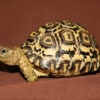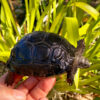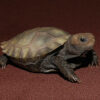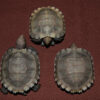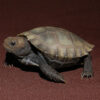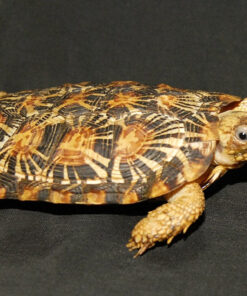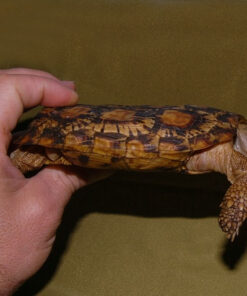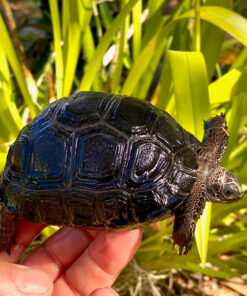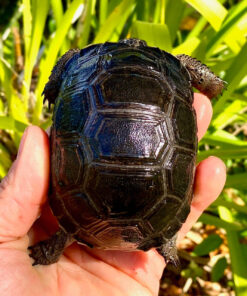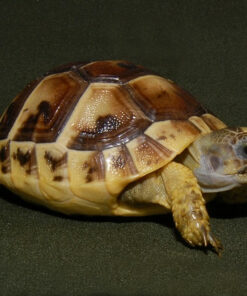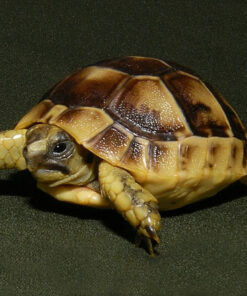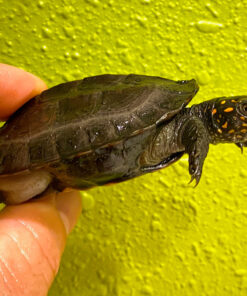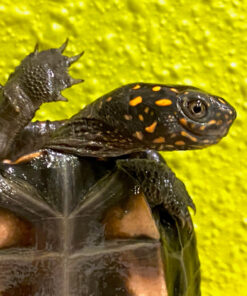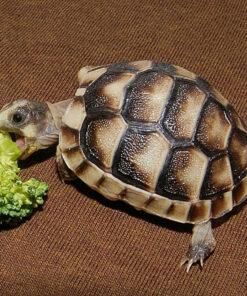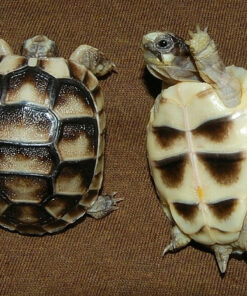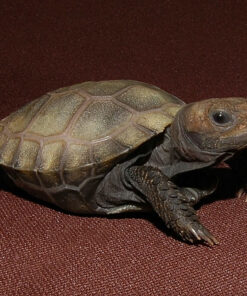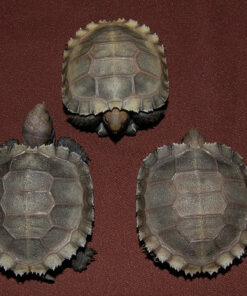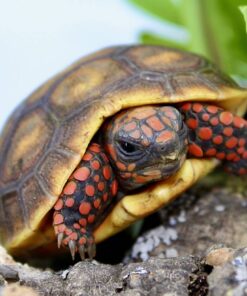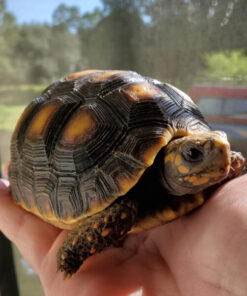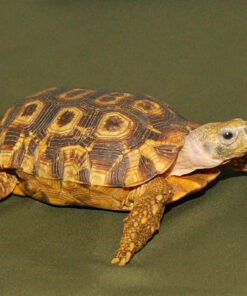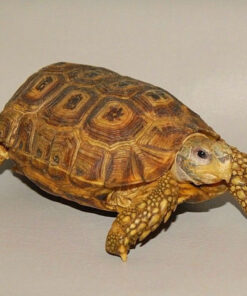$399.99
In the wild, burmese brown mountain tortoise for sale are primarily herbivores, consuming a wide variety of leafy greens, grasses, fruits, and other
Category: TORTOISE for sale
Burmese Brown Mountain Tortoise: A Comprehensive Guide
The burmese brown mountain tortoise for sale (*Manouria emys emys*), also known as the Asian brown tortoise, is one of the largest tortoises found in Asia. These remarkable reptiles, native to the tropical forests of Southeast Asia, are known for their distinctive appearance, gentle demeanor, and impressive size. If you’re considering bringing a **Burmese brown mountain tortoise** into your home, this guide will provide you with everything you need to know about caring for these incredible creatures.
Whether you’re looking for information on their natural habitat, behavior, or dietary needs, or you’re interested in finding **Burmese brown mountain tortoises for sale**, we’ve got you covered. Let’s dive deep into the world of the **Burmese brown mountain tortoise**, exploring their origins, how to care for a **baby Burmese brown mountain tortoise**, and what to expect in terms of maintenance and long-term care.
Introduction to the Burmese Brown Mountain Tortoise for sale
The **Burmese brown mountain tortoise for sale** is the smaller of the two subspecies of the Asian forest tortoise, with the other being the larger **Manouria emys phayrei**, also known as the Burmese black tortoise. While still large by most standards, the brown mountain tortoise typically grows to about 18-24 inches in length and can weigh up to 70-90 pounds. Their distinctive shell is rough-textured with a brownish color, giving them a rugged appearance well-suited to their natural forest environment.
Native to the rainforests of Myanmar (formerly Burma), Thailand, Malaysia, and parts of India, these tortoises thrive in humid, tropical climates. They are primarily terrestrial but can be found in areas with dense vegetation, hillsides, and near water sources like rivers and ponds. Burmese brown mountain tortoises are also unique in their nesting habits; they are one of the few tortoise species that build nests out of vegetation, a behavior more commonly seen in some bird species.
Physical Characteristics
**Burmese brown mountain tortoises for sale** are easily recognized by their domed, rugged carapace (upper shell), which has a weathered, almost prehistoric look. The carapace is generally brown, with some darker patches, and features prominent, raised scutes (the individual sections of the shell). As these tortoises grow, their shells develop more noticeable ridges and wear marks, giving older individuals a more textured and “aged” appearance.
Their legs are strong and sturdy, designed to help them navigate the uneven terrain of their natural forest habitat. The front legs have large, overlapping scales that provide protection from rough environments. These tortoises also have large, powerful jaws, which they use to consume a variety of vegetation.
Behavior and Temperament
The **Burmese brown mountain tortoise for sale* is known for its calm and docile nature, which makes it a favorite among tortoise enthusiasts. Despite their large size, they are generally gentle creatures that exhibit slow and deliberate movements. In captivity, they are often described as inquisitive, and with proper care, they can become quite interactive with their owners.
Like most tortoises, they are solitary animals in the wild, but they can tolerate living in groups in captivity if given enough space. However, it’s important to monitor group dynamics, as even docile tortoises can exhibit territorial behavior, especially when it comes to food or basking spots.
One unique behavior of **Burmese brown mountain tortoises for sale** is their nesting habits. Female tortoises are known to build elaborate nests out of leaves and other vegetation, a behavior that is quite rare among tortoise species. They are also more active during cooler parts of the day, such as early morning or late afternoon, to avoid the heat of the midday sun.
### Housing and Enclosure
Providing the proper housing for a **Burmese brown mountain tortoise** is essential for its health and well-being. Given their large size and active nature, these tortoises require a significant amount of space, especially as they grow. Here’s what you need to consider when setting up an enclosure for your **baby Burmese brown mountain tortoise**:
Indoor Enclosures
While baby tortoises can be kept indoors in a large terrarium or tortoise table, adults will eventually need much more space. For a **baby Burmese brown mountain tortoise**, an enclosure that measures at least 4 feet by 2 feet is recommended, but larger is always better. As they grow, you’ll need to upgrade their enclosure to accommodate their increasing size and activity levels.
The substrate for the enclosure should be a mix of soil, coconut coir, or cypress mulch to allow for digging and burrowing. These tortoises enjoy humidity, so it’s important to maintain a substrate that can retain moisture without becoming waterlogged. Regular misting of the enclosure will help maintain the humidity levels needed for a healthy tortoise.
Outdoor Enclosures
For adult Burmese brown mountain tortoises, outdoor enclosures are ideal, especially if you live in a climate that mimics their natural tropical environment. A large, secure, and shaded area is crucial to keep them comfortable. Outdoor enclosures should be well-fenced and predator-proof, as these tortoises are strong and can be good diggers.
The outdoor habitat should include both sunny areas for basking and shady areas for cooling down. Ensure that the enclosure has plenty of plants and vegetation, as Burmese brown mountain tortoises enjoy foraging on leaves and flowers.
Lighting and Heating
Like most tortoises, the **Burmese brown mountain tortoise** requires both heat and UVB lighting to stay healthy. A basking spot that reaches temperatures of 90-95°F should be provided during the day, while the rest of the enclosure should remain between 75-85°F. At night, temperatures can drop to around 70°F, but it’s important to avoid letting the temperature fall too low, as this can cause health issues.
UVB lighting is essential for these tortoises, as it helps them synthesize vitamin D3, which is crucial for calcium absorption and shell health. Without adequate UVB exposure, they are at risk for metabolic bone disease and other serious health issues.
### Diet and Nutrition
In the wild, **Burmese brown mountain tortoises** are primarily herbivores, consuming a wide variety of leafy greens, grasses, fruits, and other vegetation. In captivity, it’s important to mimic this diet as closely as possible to ensure they receive the nutrients they need for healthy growth and shell development.
Recommended Diet
– **Leafy greens**: Collard greens, mustard greens, dandelion greens, and turnip greens should make up the bulk of their diet.
– **Vegetables**: Offer a variety of vegetables like squash, zucchini, and carrots in moderation.
– **Fruits**: While fruits should only be offered occasionally, some safe options include berries, apples, and melons. Too much fruit can lead to digestive issues, so it’s best to limit their intake.
– **Flowers**: Safe flowers such as hibiscus, rose petals, and dandelions can be a tasty and nutritious treat for your tortoise.
Providing a well-balanced diet with plenty of variety is key to preventing nutrient deficiencies. Additionally, dusting their food with calcium powder a few times a week will help ensure proper shell and bone development, especially in younger tortoises.
#### Water
While **Burmese brown mountain tortoises** are adapted to humid environments, they still need access to fresh, clean water at all times. A shallow water dish large enough for the tortoise to soak in should be available in their enclosure. Soaking is important for hydration, especially in drier environments, and can also aid in digestion.
### Health and Common Issues
The **Burmese brown mountain tortoise** is generally a hardy species, but like all reptiles, it requires proper care to avoid health issues. Regular veterinary check-ups and close monitoring of their behavior can help prevent or address health problems early on.
Common Health Issues
– **Respiratory Infections**: These are common in tortoises that are kept in environments that are too cold or too humid. Symptoms include wheezing, nasal discharge, and lethargy. If you notice these signs, it’s important to consult a reptile veterinarian.
– **Shell Rot**: This fungal or bacterial infection can develop if the tortoise’s enclosure is too damp. Shell rot appears as soft spots or discolored patches on the shell. Keeping the enclosure clean and dry is essential in preventing this issue.
– **Metabolic Bone Disease**: Caused by a lack of calcium or insufficient UVB exposure, metabolic bone disease can lead to soft, deformed bones and shells. Providing proper UVB lighting and a calcium-rich diet will help prevent this condition.
Purchasing a Burmese Brown Mountain Tortoise
If you’re interested in purchasing a **Burmese brown mountain tortoise**, it’s important to find a reputable seller. Whether you’re searching for **Burmese brown mountain tortoises for sale** or looking for a **baby Burmese brown mountain tortoise**, ensure that the seller prioritizes the health and well-being of the animals.
Price and Where to Buy
The price of a **baby Burmese brown mountain tortoise** can vary depending on factors such as the breeder’s reputation, the tortoise’s size, and availability. On average, you can expect to pay anywhere from $200 to $500 for a healthy hatchling. Adult tortoises may cost more, especially if they are rare or from specific bloodlines.
Reputable breeders or specialty reptile stores are often the best places to find **Burmese brown mountain tortoises for sale**. Avoid purchasing from pet stores that don’t specialize in reptiles, as they may not provide the proper care or environment for tortoises.
Conclusion
The **Burmese brown mountain tortoise** is a captivating species, both for its impressive size and its gentle nature. While they require a significant level of care, they are rewarding pets for those who can meet their needs. Understanding the specifics of their diet, housing, and overall care will ensure that these tortoises thrive in captivity.
When looking for **Burmese brown mountain tortoises for sale**, it’s essential to choose a reputable source that prioritizes the health of their animals. Whether you’re seeking a **baby Burmese brown mountain tortoise** or an adult, ensuring the tortoise’s environment mimics its natural habitat as closely as possible is the key to long-term health and happiness.
If you’re considering adding one of these majestic creatures to your family, be prepared for a long-term commitment. With proper care, a **Burmese brown mountain tortoise** can live for several decades, making them a lifelong companion. Their unique personalities and calm demeanor make them not only fascinating reptiles to observe but also wonderful pets to care for.
By providing the right environment, diet, and attention, you can ensure that your **Burmese brown mountain tortoise** grows into a healthy and happy adult. With their endearing characteristics and gentle temperament, these tortoises can bring a unique and fulfilling experience to any reptile enthusiast’s life.
Related products
TORTOISE for sale
Pancake Tortoise for Sale – Exotic Pets with Unique Flat Shells
$799.99
TORTOISE for sale
$1,599.99
TORTOISE for sale
$174.99
Sale!
TORTOISE for sale
TORTOISE for sale
Baby Marginated Tortoise for Sale – Adopt the Perfect Exotic Pet
$124.99
TORTOISE for sale
$224.99

